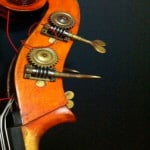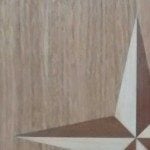Help with Thicknessing Please!!! :-)
Welcome! / Forums / General Woodworking Discussions / Tools and Tool Maintenance/Restoration / Help with Thicknessing Please!!! :-)
Tagged: jig, Scrub Plane, scrubplane, thickness, thicknessing
- This topic has 14 replies, 7 voices, and was last updated 5 years, 7 months ago by
Pepper Pot.
-
AuthorPosts
-
21 June 2017 at 6:51 pm #313128
Hi everyone! I was working on the dovetail box project (chisel tray first) and needed to thickness my stock by taking 3/8″ off a 3/4″ thick piece of pine. That’s quite a bit of wood to hog off. For this project I converted a No. 4 plane into a scrub plane. It seems to work very well. However, I spent 2 hours on this board and finally got it to thickness I needed but I was really having difficulty getting the board completely flat. So here are my questions:
1. Even though it takes nice thick shavings, it still seems to take quite a while to hog off 3/8″ wood. I have seen other scrub planes that have a more aggressively rounded end then what Paul seems to use with the No. 4 plane and they remove heavy amounts of wood quickly. What is your opinion/experience with this?
2. How long should it take me (roughly) to remove 3/8″ off a board that is 3/4″ thick by 13″ long?
3. I watched Paul’s thicknessing jig video, which obviously only works for thinner stock that is no more wide than the plane blade. But, do you know of any other ways to construct a jig for thickness for wider planks such as 5 3/4″ wide?
Finally, I’d like to mention that I love hand planes and using them. I am fairly patient. I am also new to this and just wondering the best approach.
Thank you!!!
 21 June 2017 at 7:47 pm #313129
21 June 2017 at 7:47 pm #313129There are many different approaches. The current issue of Popular Woodworking, (I don’t have it with me right now, must be July 2017) has a Schwartz article on using a jack plane for such tasks. Its a good article.
 21 June 2017 at 7:54 pm #313130
21 June 2017 at 7:54 pm #313130Hi John,
I dont doubt that 3/8″ or 9,5mm take long to take off with a Plane. At that kinda thickness just use a Saw its quicker, easier and leaves you with some thin scrap you can use for shims/spacers or the like.
For really hogging off a ton a dedicated wooden Scrub with a wide open mouth would probably work better then a No. 4, they are also lighter which could help.
Another thing we just recently had in another topic, dont get too hung up on perfectly flat surfaces. What really matters is that the Thickness is where you want it, Twist and depending on what it is the Planemarks are gone so the joints will Fit together.
No need to go run for your surfaceplate and feeler gauge, its just way overboard.21 June 2017 at 9:06 pm #313135Thnx @kamikazekrieger. Sounds like good advice to saw that off instead of scrubbing it all off! I’m not being overly particular about the flatness. The issue I was running into which I failed to mention earlier is that I had also taken quite a bit of belly/cup out of the board but was having difficulty getting it flat enough to lay my joinery on top of without noticing. I guess I just need to be a little more patient and keep practicing. After struggling with the belly/cup removal and trying to get it flat for two hours, I was a bit tired! LOL. Thanks again!!! 🙂
 21 June 2017 at 9:12 pm #313137
21 June 2017 at 9:12 pm #313137Sometimes the stock prep is the most troublesome! Schwartz has a video on the pop wood youtube channel about prepping wood. I find the method he teaches works the best for me. I try to most often work from rough sawn material.
I often wonder if this would really have been done, traditionally. It is so much work to hog off 3/8″ and so wasteful of material. It is also a lot of work to resaw. So, I wonder if traditionally the work would have been left to the mill and the craftsman would have purchased 2/4 material. Flatten a side and then take as little as possible from the other to get a show face and you’d be in the ballpark of 3/8″. If you are using hand methods rather than machine methods, it doesn’t really matter if the material is the same thickness for all the members, as long as it is visually acceptable. So, if you had 5/16 on one piece and 7/16 on another, and exactly 3/8 on another, it would look fine in most cases. You could built to exact dimensions, e.g., outer dimensions of a drawer, while the inside dimension (where the socks go) varied a bit, but with zero consequence. So, I really wonder if we are making things harder for ourselves and not fully taking advantage of what hand tools can do. Of course, if we don’t have access to the (rough) thickness we need from the mill, then we need to compensate somehow.
This isn’t a useful reply for your problem, but I wonder if someone knows if the mill did more of the work back then and you could get thinner rough material, like 2/4. I’m not sure that I’ve seen less than 4/4. A bandsaw may be the answer.
Ah…I forgot to say: Yes, you can put a heavier camber on your scrub plane, but my experience is that this gives you a thicker, but narrower shaving. You cut deeper per pass, but need more passes. A modest (but definite) camber run across the grain (rather than along it) might be the fastest way to hog off material, if you can control the spelching. You want just enough camber to go as deep as your deepest cut without burying the corners of the blade. More camber than that that may not be an advantage. This answer would change if you were hogging off an edge rather than a face. With a big camber, like on a “real” scrub plane, you can take off amazing amounts of wood per pass from an edge. The surface is heavily dished, but that goes flat quickly with a normal bench plane or by scooting the scrub to the left and to the right for a pass before the normal bench plane.
I’ve always seen the #4 with a considerable radius / camber, not straight. Mine mostly sits on the shelf as I prefer the #4 or #5 as a scrub because the blade is wider, but the #40 is awesome for attacking edges (things narrower than the #40). Even for that, I tend to grab my #5 scrub. (My scrub is a #5 because that was the junky plane I had at the time…I might actually prefer it to a #4 scrub. Doubt it matters much, though).
Mostly because I have the saws to handle it, I will saw to thickness whne I need to remove 3/8 or more and the board is question is under 10″ wide. Over 10″ you pretty much have to go at it with a scrub plane. If you check out Paul’s first video on the Joiner’s chest he does a really good break down on the thickness planing wide stock.
25 September 2018 at 1:01 pm #313138I just made my first box last weekend. Here is the decription and some pictures:
First Box
Description of the cutsThe whole box was made from one thicker board, split into two halves for thickness. One of these halves is the bottom with some leftover wood, the other half is used for all the walls of the box.
This box took me like 8 1/2 hours alltogether.
Stock preparation for beginners really takes time until we get some more practice and the knowledge about when to use what tool, saw or plane. -
AuthorPosts
- You must be logged in to reply to this topic.
